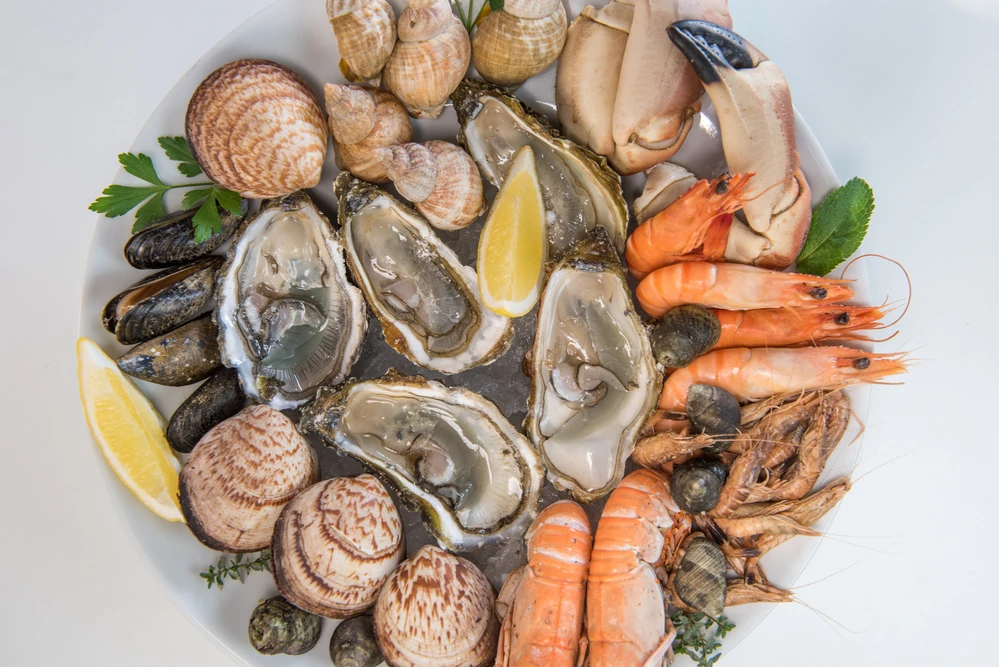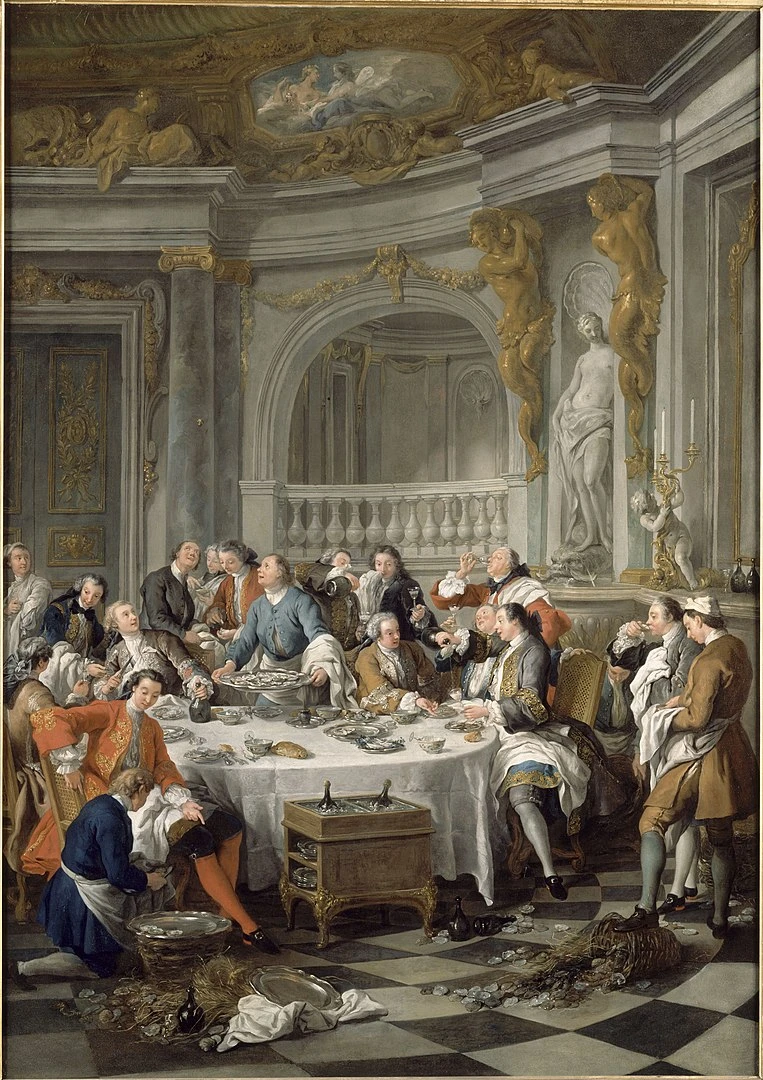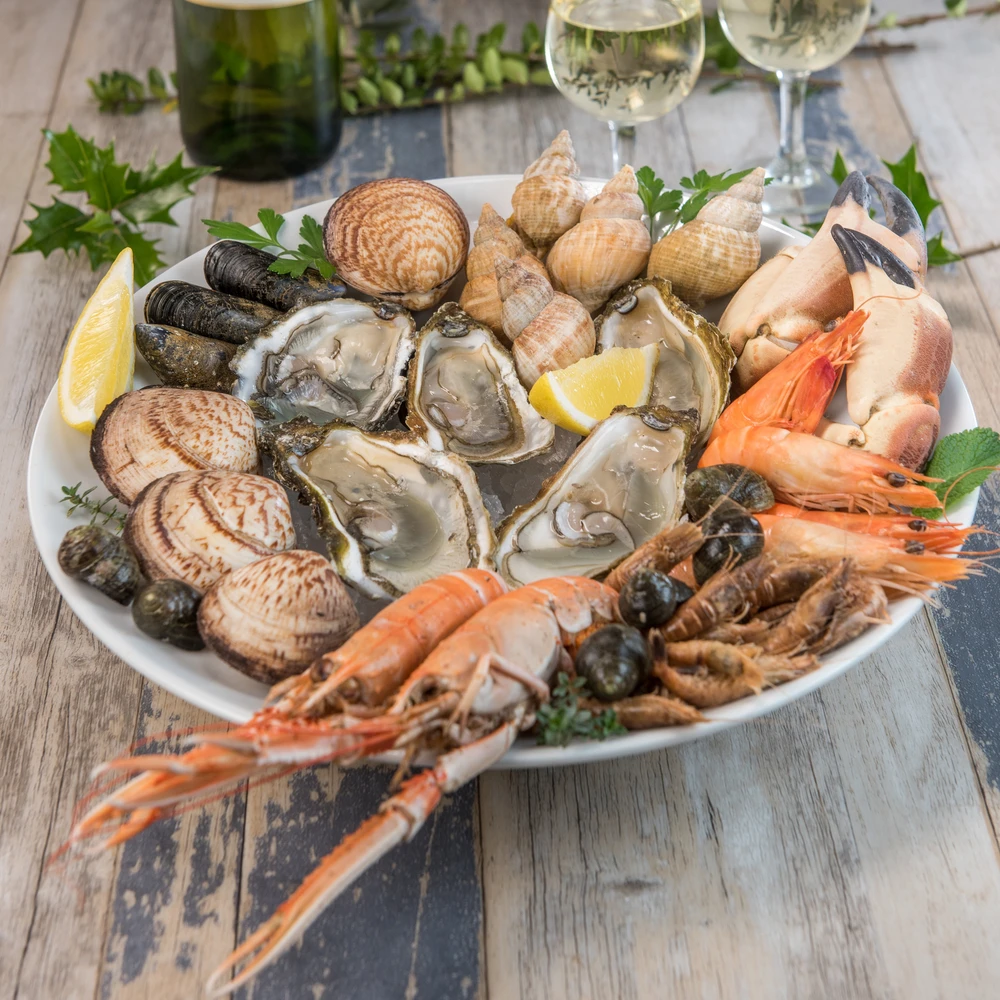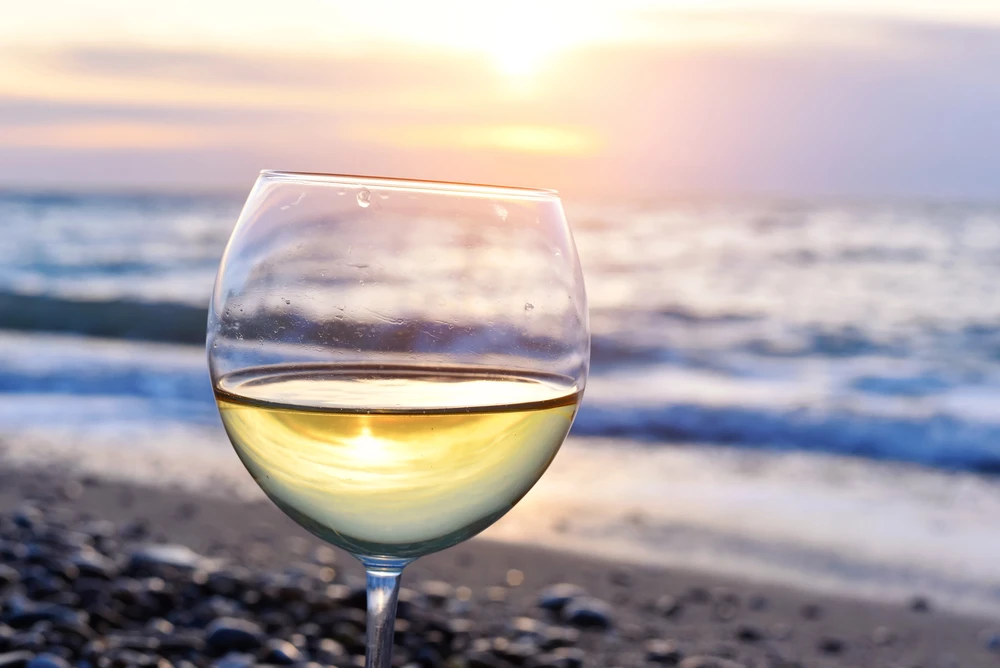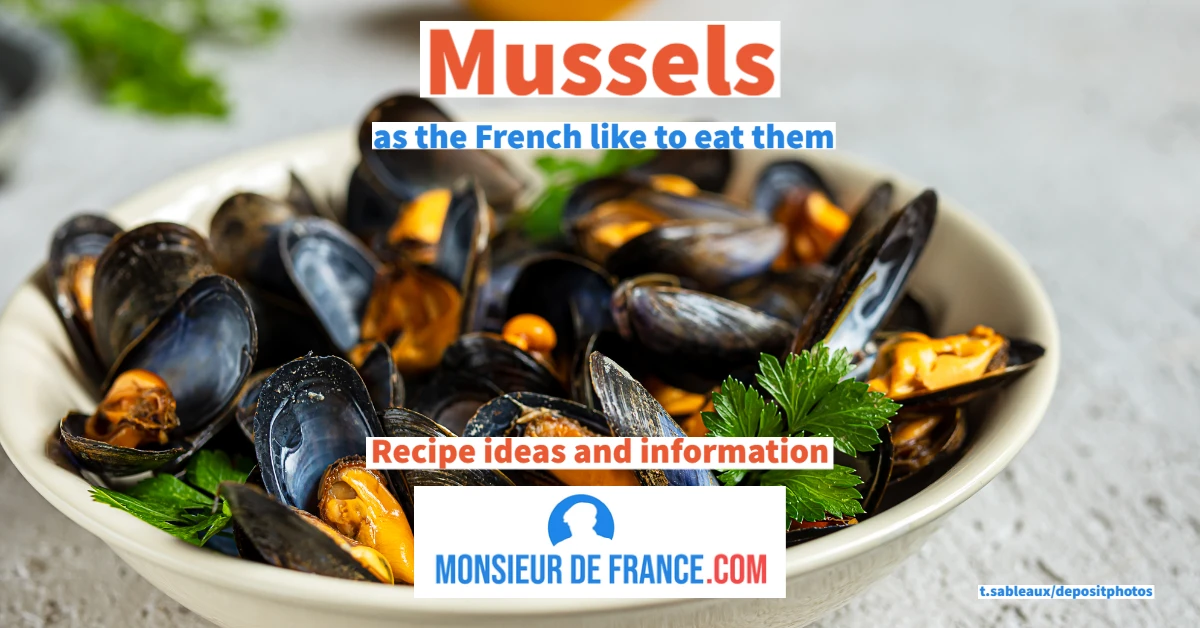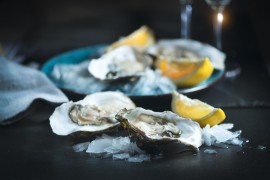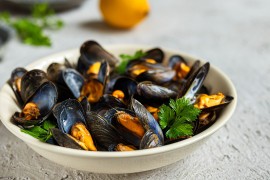How do you make your own seafood platter?
It's all about freshness. Large crustaceans must be alive. Langoustines should have a shiny, black eye. An open oyster should retract slightly when you brush the edge of its flesh. Everything must be kept cold, never frozen.
What to put on a seafood platter?
The proportions depend, of course, on the number of guests. Here are the ideal guidelines to ensure that everyone enjoys their meal without excess.
A seafood platter. Photo chosen by monsieurdefrance.com: FreeProd via depositphotos.
Seafood platter for 2
-
8 clams
-
8 meadows
-
6 clams
-
10 whelks
-
12 langoustines
-
12 oysters (size 3, perfect balance between flesh and flavour)
-
100 g periwinkles
-
100 g shrimp bouquet
-
2 prawns (optional)
And in the center of the platter: -
1 crab or 1 lobster or 1 lobster or 2 spiders.
Seafood platter for 4
-
16 clams
-
16 meadows
-
12 clams
-
20 whelks
-
24 langoustines
-
24 oysters
-
200 g periwinkles
-
200 g shrimp bouquet
-
4 gambas
And for the centerpiece : -
2 crabs or 2 lobsters or 1 large lobster or 3 spiders.
Seafood platter for 8
-
32 clams
-
32 meadows
-
24 clams
-
40 whelks
-
48 langoustines
-
48 oysters
-
400 g periwinkles
-
400 g shrimp bouquet
-
8 gambas
And to top it all off: -
3 to 4 crab or 2 lobsters or 2 spiny lobsters or 4 spiders.
Essential support
-
½ lemon per person
-
50 g salted butter per guest
-
shallot vinaigrette
-
a little mayonnaise
-
rye bread, the best ally for iodized flavours
Seafood made a spectacular breakthrough on French tables in the 17th century, and especially in the 18th century, when oysters arrived in Paris thanks to the improved road network.
Seafood made a breakthrough on the French table in the 17th century, and especially in the 17th century with the arrival of oysters on Parisian tables thanks to improvements in the road network. By Jean-François de Troy - Harry Brejat / RMN, Domaine public via wikipedia.
What utensils should you bring?
A seafood platter is also a matter of elegance:
-
finger rinses (hot water + a few drops of orange blossom),
-
thick towels,
-
picks for pliers,
-
a nutcracker for breaking shells.
How to arrange a seafood platter?
Use crushed ice and some fresh seaweed (goemon). Arrange the larger elements in the center, then the smaller ones around them, grouped by species. Finish with lemons and sauces.
The goal: an impression of abundance and freshness - it's also what whets the appetite.
Different ways to cook seafood
We always cook in boiling water, and the time is counted from the resumption of boiling.
Bulots:
10 min in boiling water flavored with thyme and bay leaf, then remove immediately.
Bigorneaux:
2 min in boiling water seasoned with salt and pepper, thyme and bay leaf. Leave to cool in the water before draining.
Shrimp:
Lightly salted boiling water, 5 min for raw shrimp.
Langoustines:
Salted boiling water + 1 tbsp. vinegar, 4 min. covered.
Spiders:
Cold salted water, medium heat until simmering, then 20 min cooking time.
Crabs:
Cold salted water with thyme, bay leaf and vinegar. Allow 15 min from boiling.
Lobster:
Plunge it headfirst into boiling salted water. When boiling resumes, reduce heat to medium.
➡️ 10 min for 300 g, 14 min for 500 g, then +1 min for each additional 125 g.
What wine to drink with a seafood platter?
A dry, mineral white wine is ideal:
-
the Muscadet, a timeless classic,
-
a fruity Entre-Deux-Mers,
-
a lively Riesling d'Alsace,
-
or an elegant Chablis.
The wine should remain light and fresh to accompany the iodine and sweetness of the salted butter.
Tip from Monsieur de France
To stabilize your oysters and prevent them from tipping over, place them on a bed of coarse salt rather than on crushed ice. It's safer, just as pretty, and keeps them fresh without excess water.
FAQ - Seafood platter
Which seafood to put on a platter?
The essentials: oysters, shrimps, whelks, langoustines and periwinkles. Then add crabs, crab cakes, lobsters or langoustes as you wish.
How to arrange a seafood platter?
Large shellfish in the center, shellfish all around. Finish with lemons and sauces for a harmonious presentation.
How long in advance should I prepare a tray?
2 to 3 hours maximum before the meal, in the refrigerator. Never freeze.
Which white wine to choose?
Muscadet, Chablis, Riesling or Entre-Deux-Mers: the important thing is that it's dry and mineral.
Can you make a seafood platter the day before?
No, it has to be prepared the same day. Only whelks and periwinkles can be cooked the day before and kept in a cool place.
How much per person?
Count on around 500 g to 600 g of seafood per guest for a full meal.

